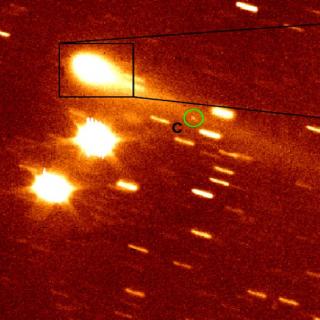Yumoto, K.; Tatsumi, E.; Kouyama, T.; Golish, D. R.; Cho, Y.; Morota, T.; Kameda, S.; Sato, H.; Rizk, B.; DellaGiustina, D. N.; Yokota, Y.; Suzuki, H.; de León, J.; Campins, H.; Licandro, J.; Popescu, M.; Rizos, J. L.; Honda, R.; Yamada, M.; Sakatani, N.; Honda, C.; Matsuoka, M.; Hayakawa, M.; Sawada, H.; Ogawa, K.; Yamamoto, Y.; Lauretta, D. S.; Sugita, S.
Bibliographical reference
Icarus
Advertised on:
7
2024
Journal
Citations
1
Refereed citations
1
Description
Asteroids (162173) Ryugu and (101955) Bennu observed by Hayabusa2 and Origins, Spectral Interpretation, Resource Identification, and Security-Regolith Explorer (OSIRIS-REx) share many global properties, but high-spatial-resolution spectral observations by the telescopic Optical Navigation Camera (ONC-T) and MapCam detected subtle but significant differences (e.g., opposite space weathering trends), which may reflect differences in their origin and evolution. Comparing these differences on the same absolute scale is necessary for understanding their causes and obtaining implications for C-complex asteroids. However, ONC-T and MapCam have a large imager-to-imager systematic error of up to 15% caused by the difference in radiometric calibration targets. To resolve this problem, we cross calibrated albedo and color data between the two instruments using the Moon as the common calibration standard. The images of the Moon taken by ONC-T and MapCam were compared with those simulated using photometry models developed from lunar orbiter data. Our results show that the cross-calibrated reflectance of Ryugu and Bennu can be obtained by upscaling the pre-cross-calibrated reflectance of Bennu by 13.3 ± 1.6% at b band, 13.2 ± 1.5% at v band, 13.6 ± 1.7% at w band, and 14.8 ± 1.8% at x band, while those for Ryugu are kept the same. These factors compensate for the imager-to-imager bias caused by differences in targets used for radiometric calibration and solar irradiance models used for data reduction. Need for such large upscaling underscore the importance of using the cross-calibrated data for accurately comparing the Ryugu and Bennu data. The uncertainty in these factors show that the reflectance of Ryugu and Bennu can be compared with <2% accuracy after applying our results. By applying our cross calibration, the geometric albedo of Bennu became consistent with those observed by ground-based telescopes and the OSIRIS-REx Visible and InfraRed Spectrometer (OVIRS). Our result can be simply applied by multiplying a constant to the publicly available data and enables accurate comparison of the optical spectra of Ryugu and Bennu in future studies.
Related projects

Minor Bodies of the Solar System
This project studies the physical and compositional properties of the so-called minor bodies of the Solar System, that includes asteroids, icy objects, and comets. Of special interest are the trans-neptunian objects (TNOs), including those considered the most distant objects detected so far (Extreme-TNOs or ETNOs); the comets and the comet-asteroid
Julia de
León Cruz